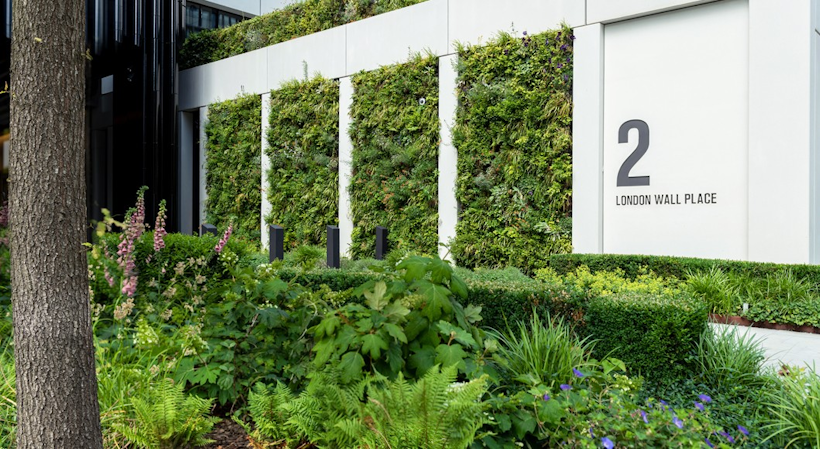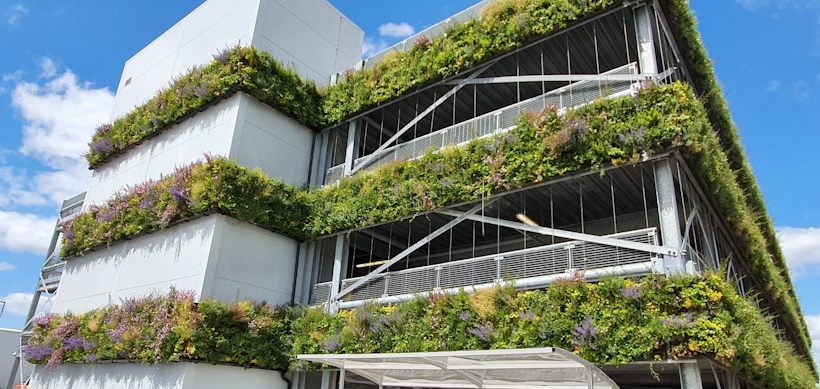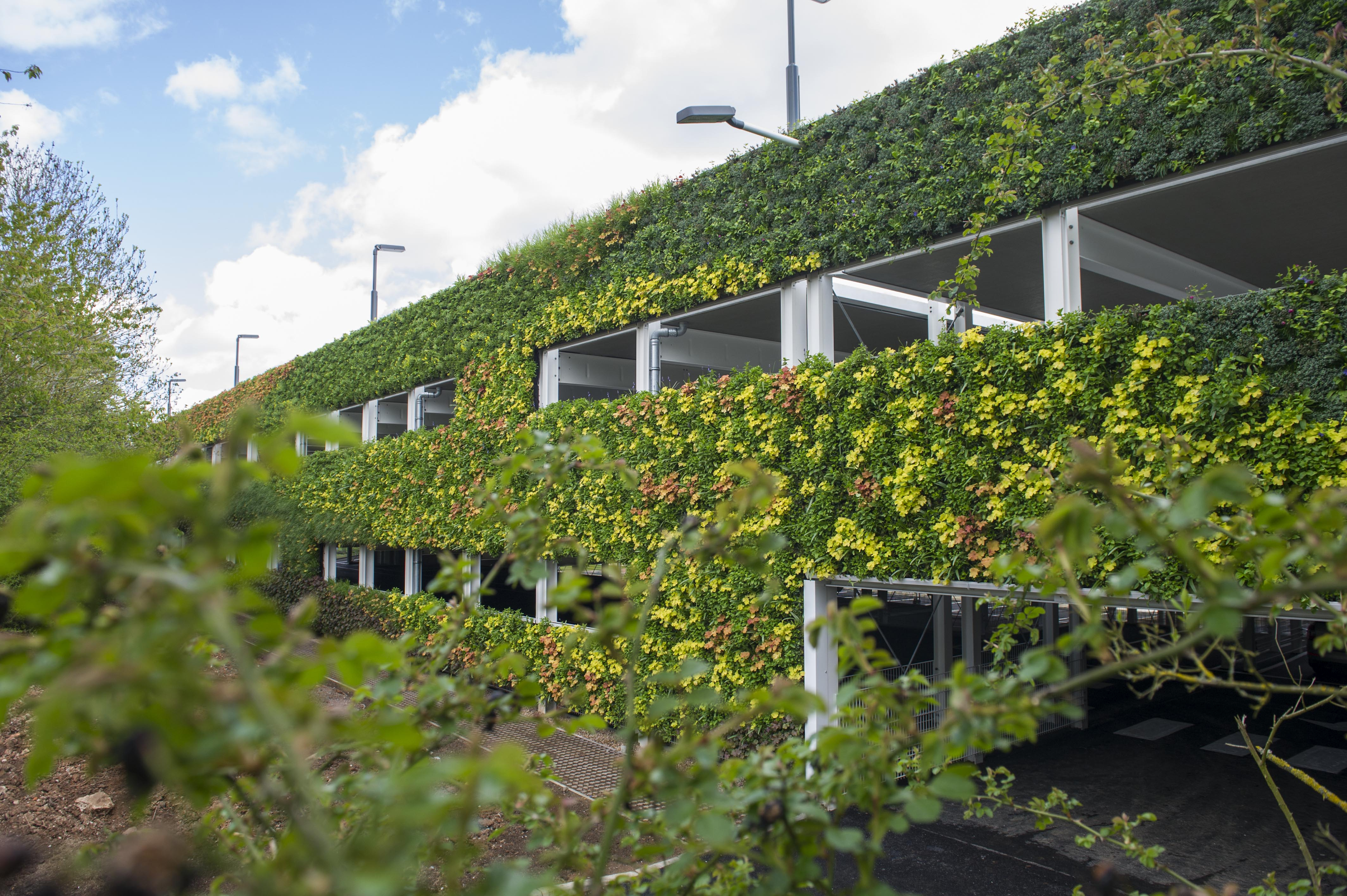From workspaces and residential areas, through to vast office blocks, shopping centres, and airports, green infrastructure is beginning to surround us everywhere we go - it’s only becoming more widespread. As modern building work aims to bring a sense of innovation and sustainability into the world we live in, living walls and green walls are notably an excellent option, both environmentally and aesthetically.
The chances are, you’ve come across both living walls and green walls before. But are you aware of the differences between the two? Let’s explore their meanings, benefits, and main differences to give you a clearer picture and help you decide what’s best for your project.
What is a green wall?
There is no set definition or criteria that a wall must meet in order to be labelled as ‘green’. Meaning that when referring to or researching your ‘green wall’ options, you’re opening yourself up to all sorts of wall types. But what do we mean by this?
Depending on who you ask, a green wall could be described in many ways. One person may recognise a green wall as something completely artificial, but the next, interpret it as a feature involving living plants.
Essentially, it comes down to your personal views. How you interpret what a green wall is, is ultimately your decision.
What is a living wall?
Living walls are much easier to define than green walls. As a modern design and architectural system for the exterior and interior of buildings, living walls can be implemented either in a free-standing or an inbuilt wall structure, containing potted plants.
Typically, the plants in a living wall design are accompanied by a complete growth set up within. This means that substrate (soil) and an irrigation system (water) is present to ensure a long-term and sustainable feature.
There are many benefits that come with the erection of a living wall, and each benefit provides a reason why living walls are often preferred. The benefits of choosing a living wall over a green wall include:
- Building preservation – Temperature changes, as well as extreme weather conditions can cause damage to the exterior of building walls. When these materials are exposed to repeated cycles of expansion and contraction, they lose their flexibility and accrue damage over time. Setting up a living wall protects the building from such damage, preserving the materials and allowing the building to remain structurally sound for longer.
- Reduced noise – Living walls are considered an effective acoustic solution. By blocking incoming sound from the outside, as well as keeping noise levels within, living walls can offer a quieter environment for workspaces. In fact, the London Living Roofs and Walls Report 2019, included a study of an 80mm thick modular living wall which successfully reduced noise by 15dB.
- Increased biodiversity – Not only do living walls increase the biodiversity of our urban space with plants, but they also offer vital nesting space, shelter and food for birds and insects. This helps to create a well-balanced local ecosystem.

So, what are the main differences?
Although they can appear fairly similar from the outside, the foundation, benefits, and long-term success of both green walls and living walls are quite different.
Where we previously described green walls as ‘open to interpretation’, this would never be the case for living walls – and here’s why.
As the name suggests, for a living wall to be classed as a living wall, it must be alive. Living walls must contain real plants and ideally natural soil, which is where the long-term sustainability, increased biodiversity, and health and wellbeing benefits come from.

To conclude: a living wall or green wall?
It’s pretty evident that living walls are the superior choice. They’re longer lasting, more sustainable, and provide a range of benefits for the workplace, environment, and local community. However, the size of the project, budget, and if there are any site constraints may have an influence on the final decision. So be sure to take these points into consideration.
Before planning a living wall, load bearing capacity’s need to be determined by a structural engineer. And of course, depending on the size of your project, condition of the existing wall, and budget set aside, it’s always best to consult with a professional for guidance.
At Viritopia, we provide all types of buildings with integrated living wall systems that have been expertly designed, installed, and maintained over the past 13 years. We work closely with our clients to discuss their project needs, providing long-term environmental assets that comply with regulatory requirements surrounding green infrastructure.
If you’re looking to have a living wall installed, get in touch with our expert team today. We’d love to make a positive impact on your project.

